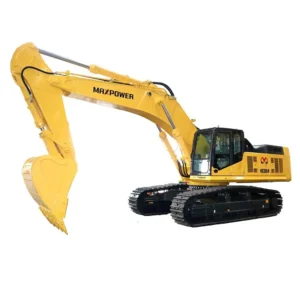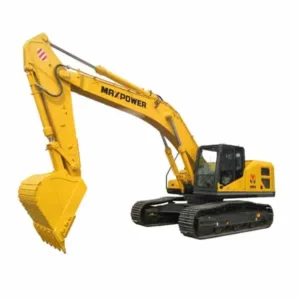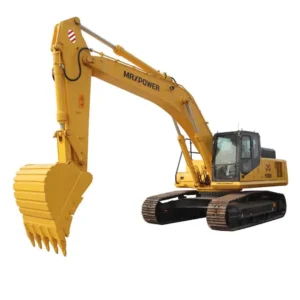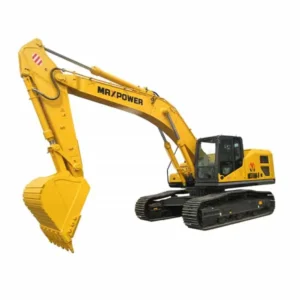Bienvenue sur mon blog !
Avant de plonger dans le contenu, j'aimerais que vous me rejoigniez sur mes plateformes de médias sociaux où je partage plus d'informations, interagis avec la communauté et publie des mises à jour. Voici comment vous pouvez me contacter :
Facebook :https://www.facebook.com/profile.php?id=100066759548969
Commençons maintenant notre voyage ensemble. J'espère que vous trouverez le contenu ici instructif, engageant et utile.
Introduction
In the world of construction and heavy machinery, excavators are indispensable tools used for a wide range of tasks, from digging foundations to demolishing structures. However, one of the most important decisions you’ll face when planning a project is choosing the right size of excavator. Both big excavators and small excavators have their unique advantages and disadvantages, depending on the nature of the work. This comprehensive guide will help you determine which type of excavator is best suited for your project by comparing the capabilities, efficiency, and cost-effectiveness of big excavators versus small excavators.
Understanding the Basics: What Are Big and Small Excavatrices?

What is a Big Excavator?
A big excavator, also known as a large or heavy excavator, typically weighs over 30 tons and is equipped with a powerful engine that can deliver high torque and digging force. These machines are designed for large-scale projects, such as commercial construction, mining, and major infrastructure development. Big excavators come with a variety of attachments, including large buckets, rippers, and hydraulic breakers, making them versatile enough to handle the toughest jobs.
Key Features of a Big Excavator:
- High Horsepower: Often exceeding 200 HP, allowing for deep digging and heavy lifting.
- Large Bucket Capacity: Typically ranges from 2 to 5 cubic meters, ideal for moving large volumes of material.
- Extended Reach and Depth: Capable of reaching depths of up to 30 feet, suitable for deep excavation tasks.
- Heavy-Duty Construction: Built to withstand the rigors of large-scale projects with robust components and reinforced structures.
What is a Small Excavator?
A small excavator, often referred to as a mini or compact excavator, generally weighs between 1 and 10 tons. These machines are designed for smaller, more precise tasks, such as residential construction, landscaping, and utility work. Small excavators are valued for their maneuverability and ability to operate in tight spaces where larger machines cannot fit.
Key Features of a Small Excavator:
- Lower Horsepower: Typically ranges from 10 to 50 HP, sufficient for light to moderate tasks.
- Compact Size: Allows for easy maneuverability in confined spaces, such as urban environments and residential areas.
- Versatile Attachments: Equipped with various attachments like augers, grapples, and small buckets for specialized tasks.
- Ease of Transport: Can be easily transported on a standard trailer, reducing logistical challenges.
Big Excavator: Advantages and Ideal Uses
Power and Performance
One of the main advantages of a big excavator is its immense power and performance capabilities. These machines are designed to handle heavy-duty tasks that require significant digging force, such as removing large amounts of earth, breaking through rock, or lifting heavy materials. The high horsepower and large bucket capacity of a big excavator allow it to complete tasks quickly and efficiently, making it ideal for projects with tight deadlines.
Performance Benefits:
- High Productivity: Moves large volumes of material in a shorter amount of time.
- Deep Excavation: Ideal for projects that require digging deep trenches or foundations.
- Heavy Lifting: Can lift and transport heavy materials, reducing the need for additional equipment.
Durability and Longevity
Big excavators are built to last, with durable components and reinforced structures designed to withstand the wear and tear of demanding projects. The heavy-duty construction of these machines ensures that they can operate for long hours in harsh environments without breaking down, making them a reliable choice for large-scale operations.
Durability Highlights:
- Robust Design: Reinforced frames and heavy-duty hydraulics ensure longevity.
- High-Quality Materials: Made with high-strength steel and corrosion-resistant coatings.
- Low Maintenance Needs: Built for durability, reducing the frequency of repairs and downtime.
Cost-Efficiency for Large Projects
While the initial investment in a big excavator can be significant, the cost-efficiency it offers for large projects is unparalleled. The ability to complete tasks quickly and with fewer passes can significantly reduce labor costs and project timelines. Additionally, big excavators often come with features like fuel-efficient engines and advanced hydraulics, which further enhance their cost-effectiveness over time.
Cost-Efficiency Factors:
- Reduced Labor Costs: Completes tasks more quickly, reducing the need for extended labor.
- Fuel Efficiency: Advanced engines consume less fuel per hour of operation.
- High Resale Value: Big excavators tend to retain their value well, making them a good long-term investment.
Small Excavator: Advantages and Ideal Uses

Maneuverability and Precision
One of the key advantages of a small excavator is its maneuverability. These machines are designed to work in tight spaces where larger excavators cannot operate, making them ideal for urban construction, landscaping, and residential projects. The precision offered by a small excavator allows operators to perform detailed work, such as digging trenches for utilities, without causing unnecessary damage to the surrounding area.
Maneuverability Benefits:
- Tight Space Navigation: Easily operates in confined spaces, such as backyards and narrow streets.
- Precision Work: Ideal for tasks that require careful handling, such as tree planting or pipe installation.
- Minimal Ground Disturbance: Reduces the impact on the surrounding environment, preserving landscaping and existing structures.
Lower Operating Costs
Small excavators are generally more cost-effective to operate than their larger counterparts. They consume less fuel, require less maintenance, and have lower transportation costs. For small to medium-sized projects, the cost savings associated with using a small excavator can be substantial.
Cost-Saving Features:
- Lower Fuel Consumption: Smaller engines use less fuel, reducing operating costs.
- Reduced Maintenance Costs: Fewer components and less wear and tear mean lower maintenance expenses.
- Easy Transport: Can be moved easily on standard trailers, reducing logistics costs.
Versatility in Various Applications
Despite their smaller size, small excavators are incredibly versatile and can be equipped with a wide range of attachments to handle different tasks. Whether you need to dig, drill, grade, or demolish, a small excavator can be adapted to meet the needs of your project. This versatility makes them a valuable asset for contractors who work on a variety of projects.
Versatility Highlights:
- Multiple Attachments: Compatible with augers, breakers, thumbs, and more.
- Adaptability: Suitable for a range of applications, from landscaping to utility work.
- Quick Attachment Changes: Allows for rapid switching between tasks, improving efficiency.
Table: Comparison of Big Excavators vs. Small Excavators
| Fonctionnalité | Big Excavator | Small Excavator |
|---|---|---|
| Poids | 30 tons and above | 1 to 10 tons |
| Horsepower | 200+ HP | 10-50 HP |
| Bucket Capacity | 2 to 5 cubic meters | 0.1 to 1 cubic meter |
| Best For | Large-scale construction, mining | Urban construction, landscaping |
| Maniabilité | Limited | High |
| Operating Costs | Higher | Lower |
| Maintenance Needs | Moderate to high | Low to moderate |
| Transport Ease | Requires heavy-duty trailers | Can be transported on standard trailers |
| Polyvalence | High with specialized attachments | Very high with multiple attachments |
Conclusion
Choosing between a big excavator and a small excavator depends largely on the specific needs of your project. Big excavators are the go-to choice for large-scale construction projects that require immense power, deep digging, and the ability to move large volumes of material quickly. They are durable, cost-efficient for large projects, and offer unparalleled performance. On the other hand, small excavators excel in maneuverability, precision, and cost-efficiency for smaller projects. Their versatility and lower operating costs make them ideal for residential construction, landscaping, and utility work. By carefully assessing the scope and requirements of your project, you can select the excavator that will deliver the best results.
FAQ
What are the main differences between big and small excavators?
Big excavators are larger, more powerful machines designed for heavy-duty tasks like large-scale construction and mining. They have higher horsepower, larger bucket capacities, and can dig deeper. Small excavators, on the other hand, are compact, more maneuverable machines suited for tasks in confined spaces, such as urban construction and landscaping. They are less powerful but offer greater precision and are more cost-effective for smaller projects.
Which type of excavator is more cost-efficient?
The cost-efficiency of an excavator depends on the project size. For large-scale projects, big excavators are more cost-efficient because they can complete tasks quickly, reducing labor and overall project costs. Small excavators are more cost-efficient for smaller projects due to their lower operating costs, fuel consumption, and maintenance needs.
Can a small excavator handle heavy-duty tasks?
While small excavators are not designed for heavy-duty tasks like big excavators, they can handle a wide range of moderate tasks effectively, especially when equipped with the right attachments. For example, they can perform trenching, grading, and light demolition work, making them versatile tools for various applications.
How do I decide which excavator is right for my project?
To decide between a big and small excavator, consider the scope of your project, the size of the work area, the type of material you’ll be handling, and your budget. For large, open spaces and
heavy-duty tasks, a big excavator is ideal. For projects in confined spaces that require precision, a small excavator is the better choice.
Are big excavators more difficult to transport?
Yes, big excavators require heavy-duty trailers and possibly special permits for transportation due to their size and weight. In contrast, small excavators are easier to transport and can be moved using standard trailers, making them more convenient for projects that require frequent relocation.












-150x150.webp)
